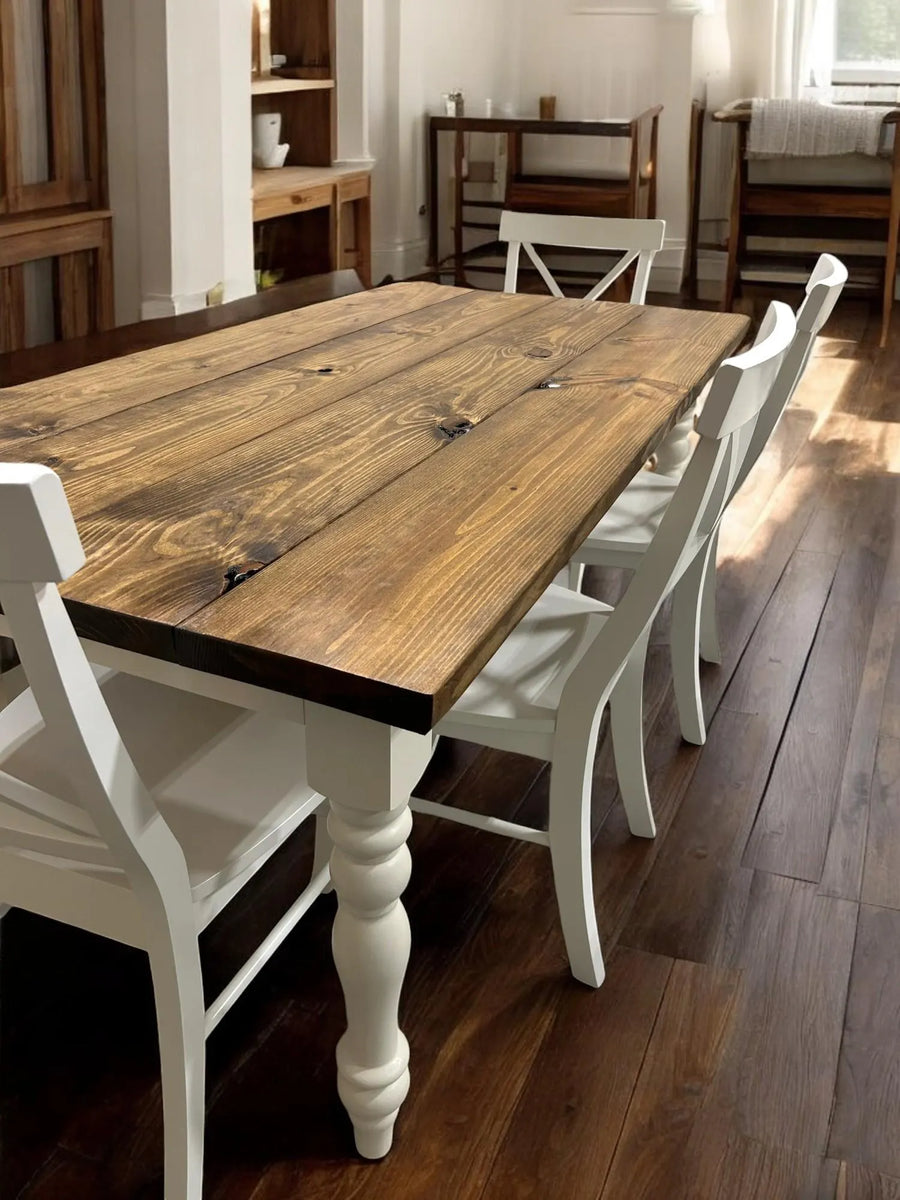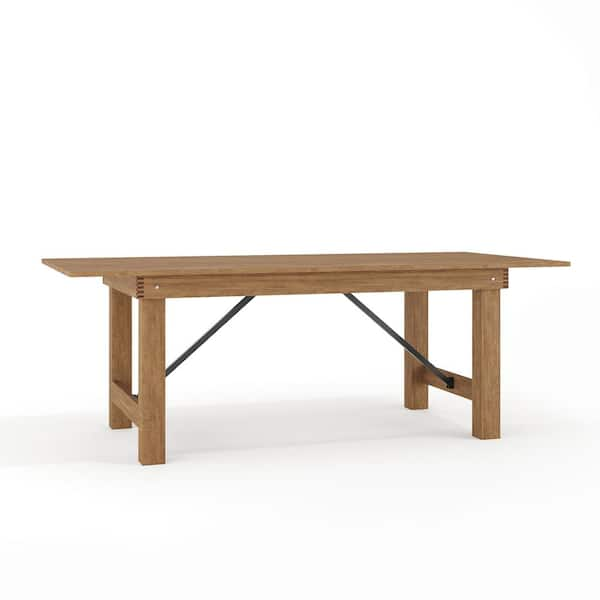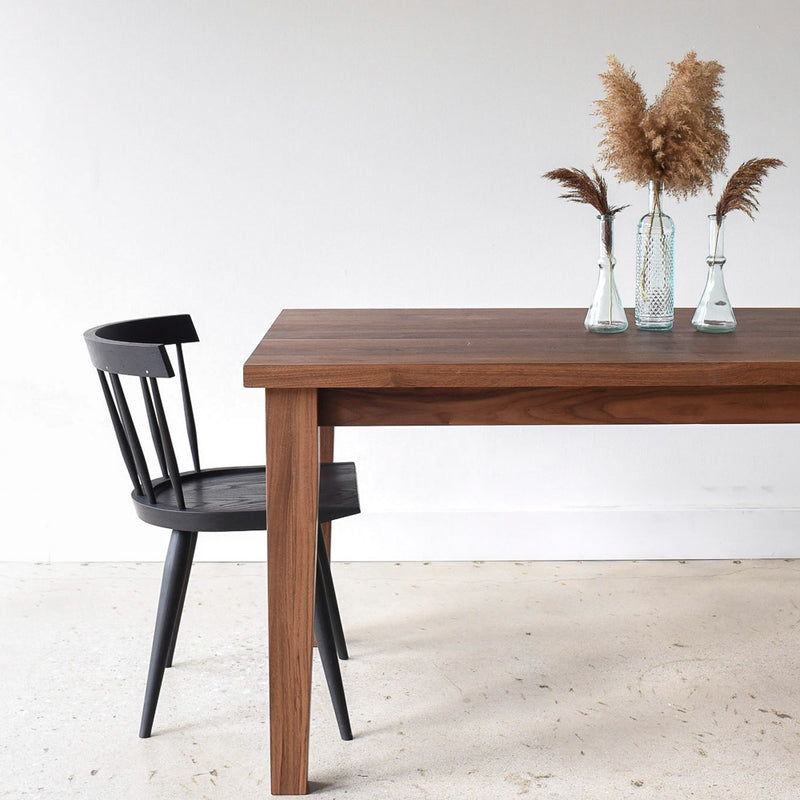Raise Your Dining Room with Sophisticated Dining Table Legs Wood Designs
Raise Your Dining Room with Sophisticated Dining Table Legs Wood Designs
Blog Article
Discovering the Different Types of Table Legs Wood for Your Dining Area
The option of dining table legs timber can exceptionally affect both the visual and functional qualities of your eating room. Solid timber choices, such as oak and walnut, supply a traditional look with unparalleled sturdiness, while crafted wood alternatives supply ingenious layouts that mimic the splendor of natural grains.
Solid Timber Options

Additionally, strong wood is renowned for its stamina and longevity. Unlike crafted products, strong timber is much less vulnerable to warping and damage with time when effectively maintained. This makes it an ideal selection for families or those who often hold gatherings. Each item of strong timber is special, showcasing individual features that contribute to the appeal and personality of the eating table.
In addition, strong timber can be finished in many means, varying from natural oils to tarnished surfaces, permitting house owners to customize their furnishings to match their decor. In recap, picking solid wood for eating table legs not just makes certain architectural integrity but also boosts the visual charm of the eating location, making it a worthwhile investment for any kind of home.
Engineered Timber Alternatives

Plywood, constructed from several layers of wood veneer, is specifically solid and secure, making it an exceptional option for dining table legs. Its split structure permits it to stand up to adjustments in humidity and temperature level better than typical solid timber. MDF, on the other hand, offers a smooth surface for painting or veneering, enabling developers to attain a polished look while keeping structural honesty.
When picking engineered wood options, it is necessary to take into consideration the desired use and wanted visual. These products not just boost the capability of eating areas but additionally permit for better design versatility, making certain that traditional and modern designs can exist together harmoniously.
Reclaimed Wood Includes
Reclaimed wood offers an unique mix of sustainability and personality, making it an increasingly prominent selection for dining table legs. Sourced from old barns, manufacturing facilities, and various other structures, reclaimed timber symbolizes a history that brand-new materials merely can not duplicate. Each piece carries its own story, marked by distinct imperfections, knots, and varying grain patterns, which add to a table's unique visual appeal.
In addition to its visual charm, redeemed timber is an ecologically friendly choice. By repurposing formerly used products, it reduces the need for brand-new lumber, thus aiding to decrease and preserve woodlands waste. This lines up with a growing consumer choice for sustainable methods in furnishings.
Moreover, reclaimed wood is commonly a lot more resilient than freshly gathered wood due to its age. The all-natural drying process that reclaimed wood undergoes outcomes in a denser and more powerful material, making it less susceptible to warping and splitting. This improves the durability of eating tables, enabling them to hold up against the rigors of day-to-day usage.
Softwood vs. Wood
When picking dining table legs, understanding the differences between softwood and wood is important for achieving you can find out more both visual and practical goals. They generally exhibit an even more rustic look, making them suitable for laid-back or country-style dining areas.
On the various other hand, woods, sourced from deciduous trees like cherry, maple, and oak, are renowned for their density, stamina, and longevity. The detailed grain patterns and abundant colors of woods supply a advanced and classic charm, making them excellent for formal dining settings. While hardwoods tend to be a lot more pricey and much heavier, their strength versus damage frequently justifies the financial investment.
Eventually, the selection between softwood and hardwood for dining table legs need to line up with your design vision, use needs, and spending plan, ensuring that your dining area reflects your individual style while staying functional in time.

Treatments and finishes
The visual charm and durability of table legs can be substantially enhanced via various coatings and treatments. These procedures not just secure the wood from damages but likewise boost its appearance, permitting it to match varied indoor styles.
One typical treatment is discoloring, which penetrates the timber and enhances its all-natural grain while including color. Discolorations offer a rich, classy appearance, allowing home owners to match their furniture with existing style. Conversely, clear finishes such as polyurethane or varnish develop a safety layer without changing the timber's original color, guaranteeing durability against deterioration.
In addition, all-natural oils, like tung or linseed oil, nurture the wood and supply a refined shine, all while being green. These oils allow the surface to breathe, protecting against wetness buildup and possible warping.
For those looking for a rustic charm, troubled or weathered finishes can be used to produce an aged appearance, adding personality to the piece. Inevitably, the selection of therapies and coatings depends upon personal preference, wanted looks, and the particular wood type, making it vital to consider these aspects when selecting eating table legs for look these up your room.
Verdict
Strong woods, engineered options, and reclaimed options each offer distinctive advantages, providing to various preferences and needs. Eventually, the choice of timber type ought to align with wanted style, sturdiness, and environmental considerations, enhancing the general dining experience.
The choice of dining table legs timber can exceptionally influence both the aesthetic and practical qualities of your eating area - Dining Table Legs Wood. Strong timber alternatives, such as oak and walnut, give a traditional look with unmatched durability, while crafted wood options offer cutting-edge styles that simulate the richness of all-natural grains. Strong wood offers a timeless top quality link that can elevate the total design of an eating area. Each piece of strong wood is distinct, showcasing individual attributes that include to the beauty and character of the dining table
Additionally, reclaimed timber is often much more resilient than newly harvested wood due to its age.
Report this page